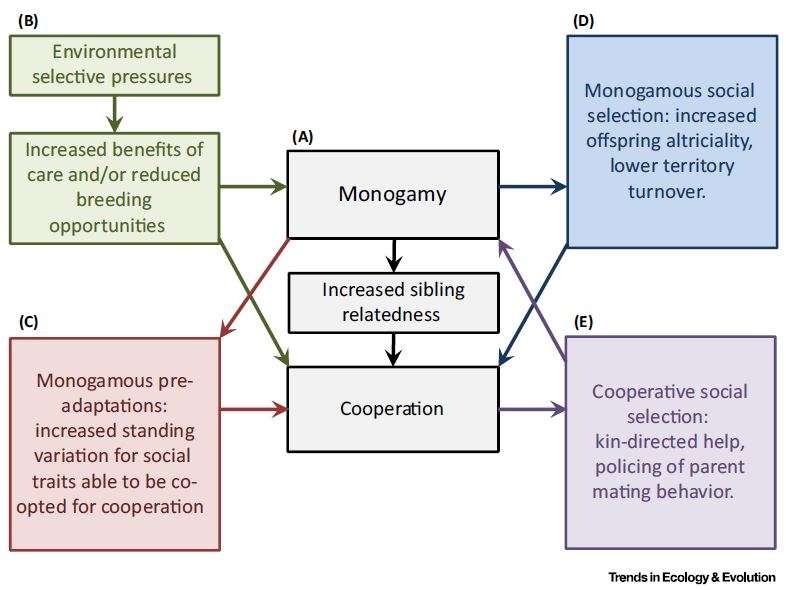Alternative explanations for the evolution of monogamy and sibling cooperation

The textbook "monogamy hypothesis" argues that monogamy favors the evolution of cooperation by increasing sibling relatedness, since helpers are as related to the full siblings that they care for as they are to their own offspring. So under certain circumstances helping can be as, or even more, successful in getting genes passed on as reproducing. But in an Opinion, published May 3 in Trends in Ecology & Evolution, two experts in social and reproductive behavior say that the proof isn't all there.
In their paper, Professor David Westneat and his graduate student Jacqueline Dillard—both at the University of Kentucky—present three alternative explanations:
- Monogamy and sibling cooperation co-evolved, so that one trait increased the benefits of the other.
- Ecological pressures selected for both monogamy and sibling cooperation simultaneously, so that one trait does not depend on the other.
- The evolution of monogamy created new physiological and behavioral adaptations that may also be useful in sibling cooperation.
"This is a case study demonstrating the importance of not boiling organisms down to simple traits," says Dillard, who studies a socially monogamous group of Bess Beetles. She notes that the classic monogamy hypothesis considers a single link between the high occurrences of sibling cooperation in monogamous species, when a number of factors could be in play.
For example, from beetles to birds to humans, both monogamy and sibling cooperation tend to occur where the value of caring for young is high and the opportunities for mating are low, so environmental changes that increase the benefits of care, such as food scarcity, or reduce likelihood of reproducing, could promote both traits.
Physical and social adaptations, such as increases in the hormones oxytocin and vasopressin, that enable monogamy could also pre-adapt species to cooperation. "If you are living with a social partner, evolving to live in that environment requires a lot of tolerance; these sorts of things can come in handy later on when you want to cooperate with another individual," Dillard says.
Dillard is now developing comparative and experimental studies that can measure the relative contributions of these variables. However, Dillard and Westneat believe that a more systems-level approach to studying monogamy and cooperation will be necessary to answer longstanding questions about the evolution of these traits.
More information: Trends in Ecology and Evolution, Dillard and Westneat: "Disentangling the correlated evolution of monogamy and cooperation" DOI: 10.1016/j.tree.2016.03.009
Journal information: Trends in Ecology and Evolution
Provided by Cell Press

















